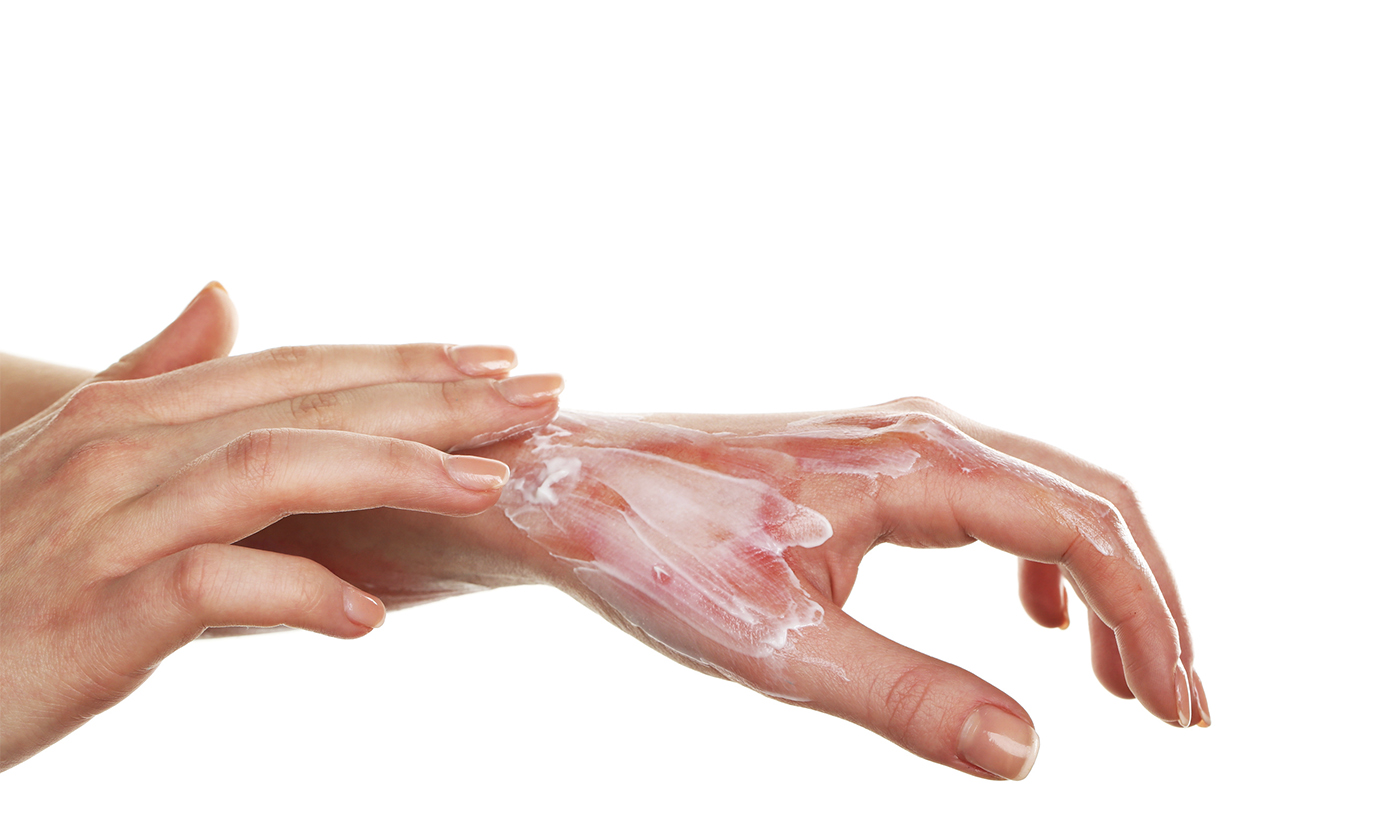
Approximately 500,000 people seek medical attention for burns every year in the United States, 40,000 of whom require hospitalization. Unlike other types of injury, burn wounds induce metabolic and inflammatory alterations that predispose the patient to various complications. Infection is the most common cause of morbidity and mortality in this population, with almost 61% of deaths being caused by infection.
The skin, one of the largest organs in the body, performs numerous vital functions, including fluid homeostasis, thermoregulation, immunologic functions, neurosensory functions, and metabolic functions (eg, vitamin D synthesis). The skin also provides primary protection against infection by acting as a physical barrier. When this barrier is damaged, pathogens can directly infiltrate the body, resulting in infection.
In addition to the nature and extent of the thermal injury influencing infections, the type and quantity of microorganisms that colonize the burn wound appear to influence the risk of invasive wound infection. The pathogens that infect the wound are primarily gram-positive bacteria such as methicillin-resistant Staphylococcus aureus (MRSA) and gram-negative bacteria such as Acinetobacter baumannii-calcoaceticus complex, Pseudomonas aeruginosa, and Klebsiella species. These latter pathogens are notable for their increasing resistance to a broad array of antimicrobial agents.
Fungal pathogens can also infect burn wounds. These infections occur more frequently after the use of broad-spectrum antibiotics. Among the fungal pathogens, Candida albicans is the most common cause of infection.
EPIDEMIOLOGY
At the beginning of the 21st century, the Centre of Fire Statistics estimated that the average number of fires worldwide was 7-8 million, resulting in 70,000-80,000 fire deaths and 500,000-800,000 fire injuries. According to the National Burn Repository’s 10-year rolling data collection from January 1, 1996, through June 30, 2006, the mortality rate associated with burns was 5.3% overall, with older age and higher-percentage total body surface area (TBSA) burned correlating with higher mortality rates.
Laboratory Studies
Diagnosis of wound infection should focus on a careful physical examination that is performed frequently by personnel trained in the management of burns.
Laboratory tests or changes in laboratory values such as white blood cell (WBC) count, neutrophil percentage, erythrocyte sedimentation rate (ESR), and C-reactive protein (CRP) level are of low yield in detecting or predicting burn infections because of the inflammatory response associated with the burn itself.
Laboratory examinations are useful for the initial risk assessment. Low prealbumin levels (100-150 mg/L) in burned patients are associated with a higher incidence of sepsis and organ dysfunction, lengthier stays, decreased ability of wound healing, and a higher mortality rate. In patients with suspected wound infections, procalcitonin (PCT) levels of 0.56 ng/mL have a reported sensitivity of 75% and a specificity of 80% when compared with quantitative swab culture. Although these levels cannot be considered diagnostic, they should prompt the physician to start searching for an infectious source.
Diagnosis of a burn wound infection relies on clinical examination and culture data, including the following:
The use of routine wound cultures as part of surveillance procedures has been proposed to provide early identification of organisms colonizing the wound, to monitor response to therapy, to guide empiric therapy, and to evaluate for nosocomial transmission.
Multiple biopsy samples from several areas of the burn wound should be obtained and sent for histopathology and microbiological workup of the pathogens and their resistance profiles.
After cleaning the wound with isopropyl alcohol, 2 parallel incisions 1-2 cm in length and 1.5 cm apart with a depth to obtain a portion of the underlying fat are made in the skin.
The goal of medical care is to prevent infection. Early excision and grafting is the current standard of care and the primary surgical method for reducing infection risk and length of hospital stay and increasing graft take. A 2015 meta-analysis of all available randomized controlled studies found that early excision reduced mortality rates in all burned patients who did not have an inhalation injury.
Wound care should be directed at thoroughly removing devitalized tissue, debris, and previously placed topical antimicrobials. A broad-spectrum surgical antimicrobial topical scrub such as chlorhexidine gluconate should be used along with adequate analgesia and preemptive anxiolytic in order to permit adequate wound care.
For analgesia, the use of opiates is debated, as these medications induce tolerance and addiction and may promote pain, a phenomenon known as opioid-induced hyperalgesia. Multimodal pain management should therefore be considered. Opioid-sparing agents include acetaminophen, ketamine, and alpha-adrenergic agonists such as clonidine and dexmedetomidine. Nonsteroidal anti-inflammatory agents should be avoided, as they impair wound healing and increase the risk of acute kidney injury and bleeding.
When an infection is identified, antimicrobial therapy should be directed at the pathogen recovered on culture. In the setting of invasive infection or evidence of sepsis, empiric therapy should be initiated. The incidence of bacteremia in critically ill adult patients with burn wounds is reported to be 4%. The most frequent pathogens in North American burn centers include S aureus and P aeruginosa; therefore, these microorganisms should be considered when choosing empiric therapy.
Antimicrobial-resistant bacterial infection among burn patients is associated with prolonged stays in the hospital. Isolates recovered after 7, 14, and 21 days of hospitalization are considerably more likely to be resistant to the antibiotics tested compared with admission-day isolates. If an multidrug-resistant pathogen is isolated, colistin should be considered. An evaluation of the antimicrobial activities of colistin against gram-negative bacteria isolates worldwide demonstrated that this medication is still effective with constant resistance levels.
Hyperglycemia is associated with an increase in inflammatory response and occurs in burned patients because of the increased rate of glucose production and impaired tissue glucose extraction. Tight glucose control has been suggested to improve survival and to reduce the sepsis risk.
Propranolol has been studied for its potential benefits in burns. It is suggested that this drug may restore glycemic control, reduce peripheral lipolysis, and enhance the immune response to sepsis by modulation of the catecholamine release during severe burn injury.